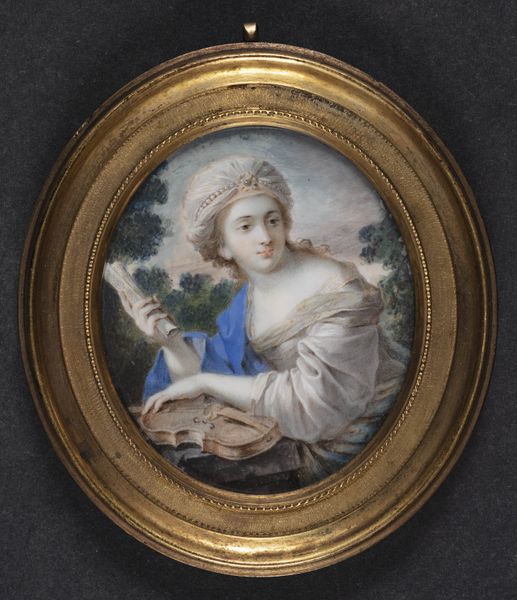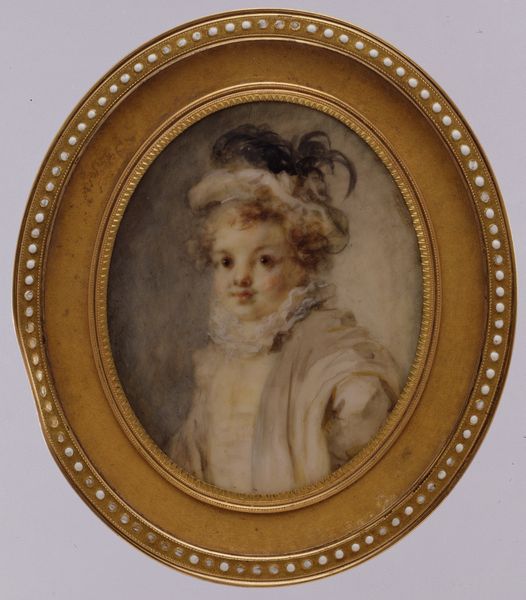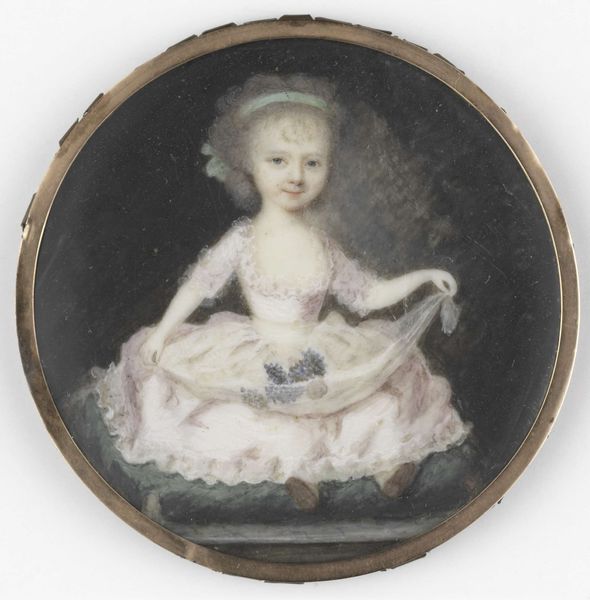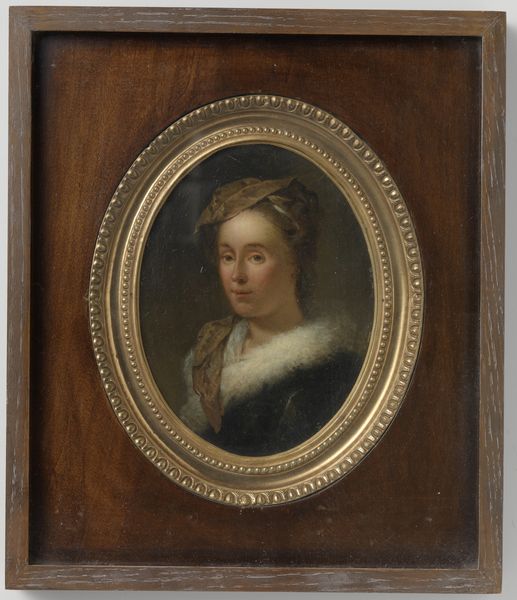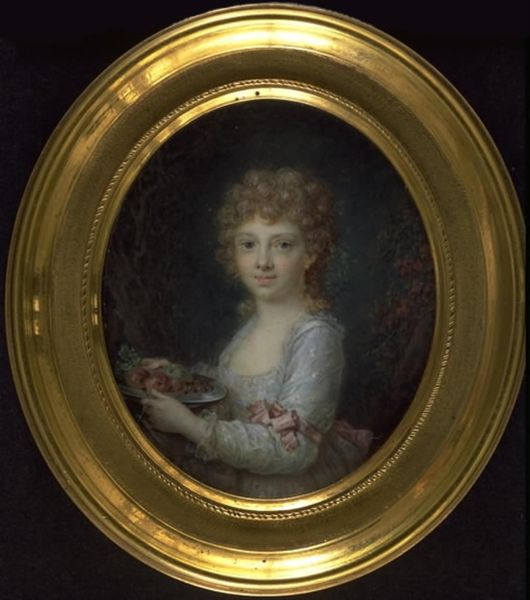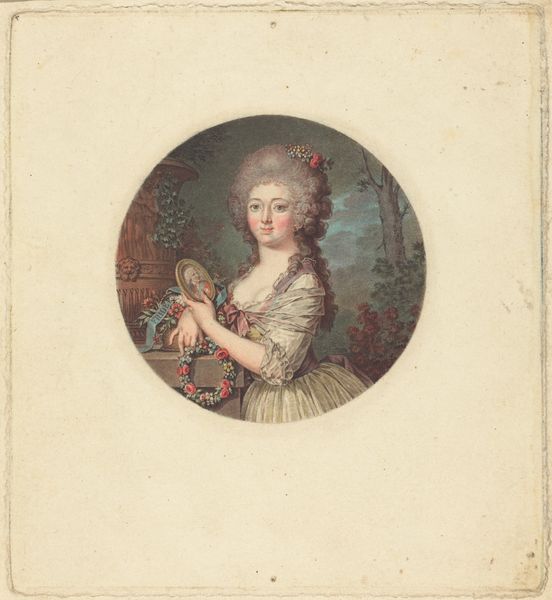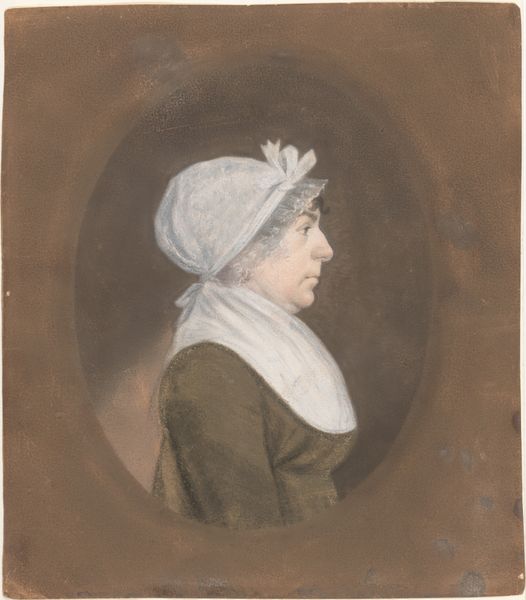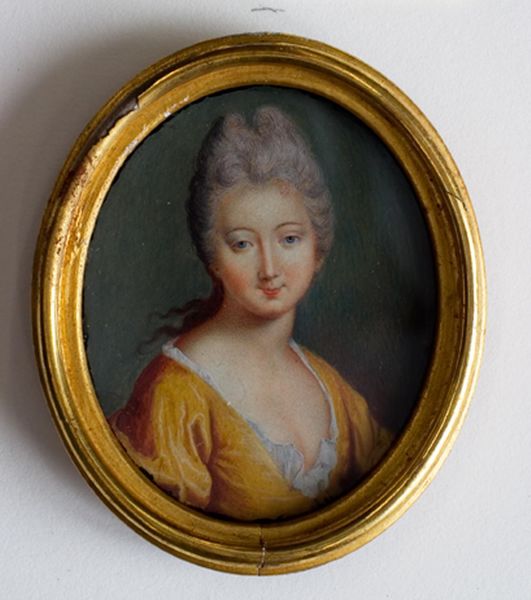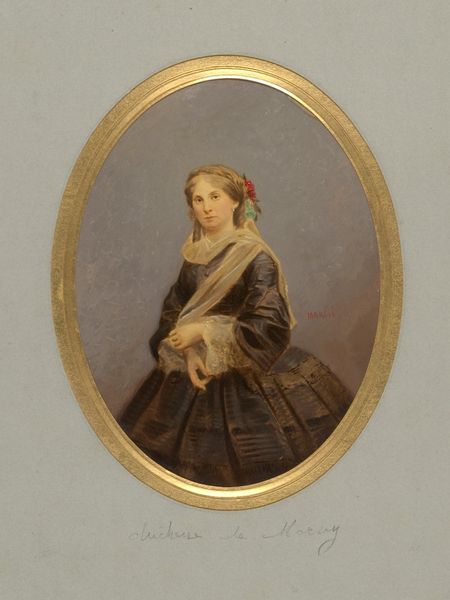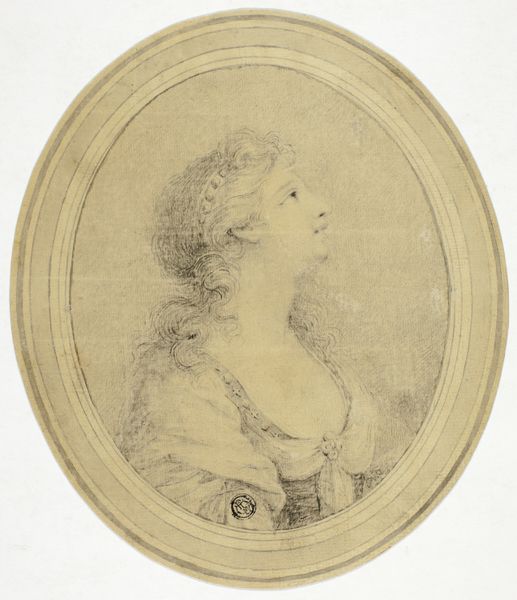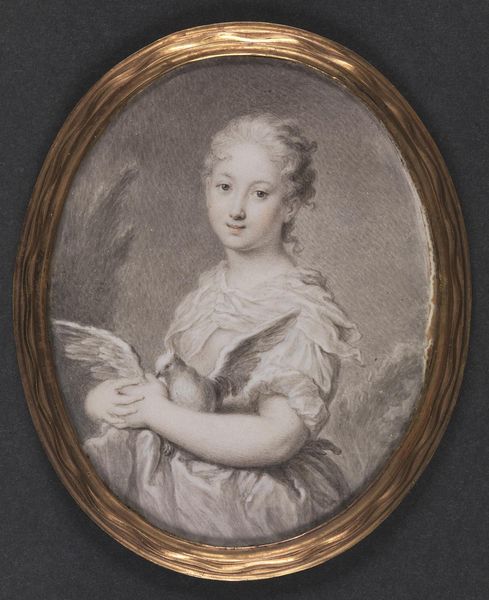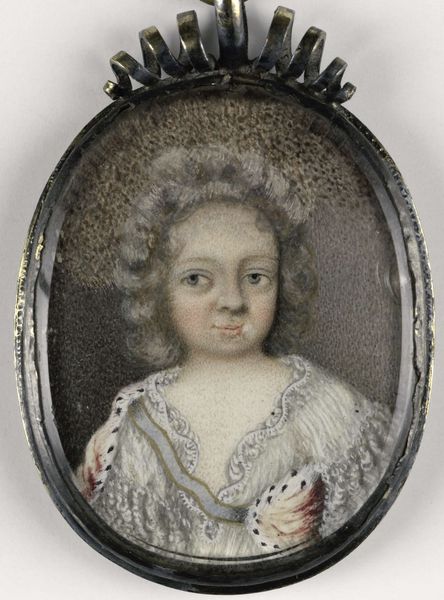
watercolor
#
portrait
#
sculpture
#
watercolor
#
genre-painting
#
miniature
#
watercolor
#
rococo
Dimensions: 6.9 cm (height) x 5.8 cm (width) (Netto)
Curator: Well, look at this captivating little world! We're standing before "Small Musical Roman Woman" by Cornelius Høyer, rendered delicately in watercolor around 1767. It's really quite tiny, nestled in a golden frame. Editor: My first thought? Enigmatic. The subdued palette gives it this dreamy, almost ghostly quality. She's there, but faintly, like a memory or a song half-remembered. It almost feels like a dream, this demure woman softly glowing! Curator: That "dreamy" quality might be deliberate, typical for Rococo's emphasis on capturing transient, fleeting beauty. Høyer seems to be interested in an idealized vision of womanhood, or perhaps a performance of pastoral simplicity. The title identifies her as Roman, perhaps signaling her status, education, or belonging. Editor: I wonder who she really *was*. "Roman Woman" could very well have been someone displaced or minoritized who strategically leaned into orientalist tropes of the day to survive the political system! Music historically provided an acceptable outlet for feminine expression, yes, but that same act has also been deployed to manipulate the voiceless into compliance. Curator: A sobering, but crucial, point to raise. I am now fixated on how Høyer uses such soft washes and almost misty rendering of the background to isolate her from those same contextual forces of compliance you suggest. The way her eyes are softly blurred gives this great impression that the musician's attention is completely and utterly internalized. It's such an inward gaze. She looks shy! Editor: Maybe it’s the way she is cloaked. Note how she is both veiled *and* playing the lute—performing intimacy and concealing her identity at the same time! Her modesty is her tool of survival in an unjust political reality. I want to explore those competing notions—open display and silent defiance— further and learn what stories this little watercolor keeps. Curator: Absolutely! There's a lot more at play than a first glance would suggest. She seemed unassuming, but she seems ready to detonate assumptions now. Editor: Right? This is why art history needs a constant stream of new perspectives. It allows us to dismantle stale perceptions about femininity, identity, agency.
Comments
No comments
Be the first to comment and join the conversation on the ultimate creative platform.
